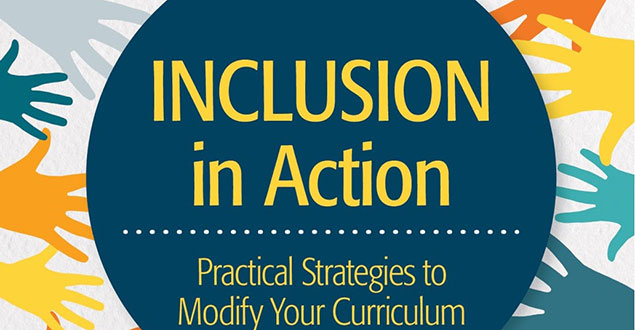When inclusion is done well, everyone in the class benefits. It strengthens the ability of all kids to work together, understand and value different points of view, think critically, and be successful learners.
Inclusive classrooms also reduce stigma. Imagine this kind of learning community (quote from Understood ):
Inclusive classrooms are filled with diverse learners. That lets kids talk about how everyone learns in their own way. They may find that they have more in common with other kids than they thought. This can go a long way in reducing stigma for kids with learning and attention issues. It can also help kids build and maintain friendships.
Understanding inclusion
Inclusion is a belief that ALL students, regardless of labels, should be members of the general education community. The philosophy of inclusion encourages the elimination of the dual special and general education systems, and the creation of a merged system that is responsive to the needs of all students.

Is it inclusion?
This chart, developed by inclusion expert Nicole Eredics, can help you understand what inclusion is and isn’t.
| YES | NO |
|---|---|
| Child spends the majority of the day in the general education classroom. | Child spends the majority of the day in a special education classroom and goes to a general education classroom for one or two periods. |
| Child’s desk is included with the other groups of desks in the classroom. | Child’s desk is away from the other desks in the classroom. |
| Child has access to and is included in classroom lessons and activities that are adapted or modified to meet his/her special needs. | Child works on his/her own curriculum. |
| Child attends outside activities with the class including assemblies, field trips, enrichment classes, and recess. | Child is given alternate activities and options with other special education students. |
| Child is an independent, valued, and respected classroom member. | Child is looked upon as helpless, needy, and dependent. |
| The child’s paraprofessional facilitates access to the curriculum and classroom activities. | The child’s paraprofessional determines access to the curriculum and classroom activities. |
| The paraprofessional encourages child to complete work as independently as possible, while providing support when needed. | The paraprofessional does not provide many opportunities for the child to complete work independently and “hovers.” |
| Child receives specialist support (therapy, speech, and language) with minimal disruption to the class routine and program. | Child is pulled from the classroom lessons and activities for specialist suport without consideration for what the child will miss. |
| The teacher can identify your child’s strengths and areas for improvement. | The teacher refers to the specialists and paraprofessionals to identify child’s development. |
| Child can name classmates and has many common classroom experiences. | Child does not know classmates and does not have many common classroom experiences. |
The trend toward inclusive general education classrooms
Can special education students thrive in general education classrooms? Watch Carl Cohn, a former superintendent, talk about the trend toward inclusive classrooms (also called inclusion classrooms). Hear his tips on what to ask if a school suggests your child should be in a separate, self-contained classroom. Learn more at Understood, 4 Benefits of Inclusion Classrooms .
Read about a New York City public school program called ASD Nest in this article from The Atlantic: What School Could Be If It Were Designed for Kids With Autism .
UDL and Inclusion: How One School District Transformed Its Community
Through Universal Design for Learning and a model of inclusivity, the Bartholomew Consolidated School Corporation helps all students, including students with autism, succeed together. Read article and watch videos
Inclusive learning: everyone’s in
This video, “Meeting the Needs of the Whole Child,” overview is part of the Edmonton Public Schools’ Inclusive Learning: Everyone’s In initiative. The District was selected as a change agent for Alberta’s Action on Inclusion initiative — to share information about best practices to welcome, include and support students’ needs in the classroom and community. (Edmonton Public Schools, Alberta, CA) View all of the “Inclusive Learning: Everyone’s In” video ›
Books about inclusive classrooms
Browse this list of recommended books about how to create and sustain inclusive classrooms that support the social, emotional, and academic growth of all students. See the booklist: The Inclusive Classroom: Books for Educators

